Ask any Indonesians about what comes first in their minds when they think of Palembang, quite possibly most of them would answer “pempek”. Also known as empek-empek, the dish comes in a wide array of variety; from fish balls (adaan), to cylindrical fishcake (lenjer), tightly packed fish noodles (keriting), fishcakes with slightly crispy crust (kulit), and grilled fishcake (panggang) as some of the most popular and widely available types of pempek.
The main ingredient to make pempek is, obviously, fish, along with tapioca which gives the dish its slightly springy texture. Typically tenggiri (a group of fish from the Scombridae Family in which Spanish mackerels belong) is used to make the dough, although the more expensive and rare belida (giant featherback) is more preferred – widely praised for its rich and intense flavor.
But one variety of pempek stands out among others for its biggest-than-fist size and bright yellow egg filling. Curiously called pempek kapal selam, literally ‘submarine’ pempek, the dough is made in a similar fashion with other pempek, but before it is cooked a chicken egg is added into the center of the dough. For serving, some people prefer to have the cooked submarines briefly fried to give the dish a golden brown look.
Pempek without cuko is comparable to sushi without the Japanese soy sauce. Made from palm sugar, vinegar, garlic, dried shrimp, and bird’s eye chili peppers, the viscous black sauce is essential in pempek serving. Its strong and refreshing flavor brings the mildly savory taste of pempek to another level – addictive level in my case.
However Palembang culinary scene, which revolves very much around fish and shrimp, varies greatly beyond the already plentiful number of pempek variations. Tekwan and model are different variants of fishcake notable for the way they are served: chopped fishcakes in shrimp broth with rice noodles, chopped coriander, and fried shallot.
While pindang is a method of cooking where snakehead murrel or shark catfish – two of the most common freshwater fish used in the dish – is cooked in a broth of tomato, shallot, chili, lemon basil, pineapple, and belimbing wuluh (Averrhoa bilimbi, believed to be native to Maluku, Indonesia), the latter gives the dish a refreshingly sour kick.
There is one dish, however, which is often overlooked by many, especially those from outside Palembang, as they often opt for the highly popular pempek. A serving of mie celor, a dish made from large yellow noodles blanched in hot water (a technique locally known as celor, hence the name) and served in dried-shrimp-flavored coconut milk with boiled egg and other ingredients, is a hearty meal perfect for any time throughout the day.
From the bountiful Musi River and its tributaries to the abundance of the open seas, one can’t help but notice how dependent the locals are on the waters to feed them. But Palembang’s food culture also speaks of strong Chinese influence which, over generations, had evolved to suit local taste buds better. An example of the many cultural exchanges that have shaped not only the culture, but also the city itself into what Palembang appears today.

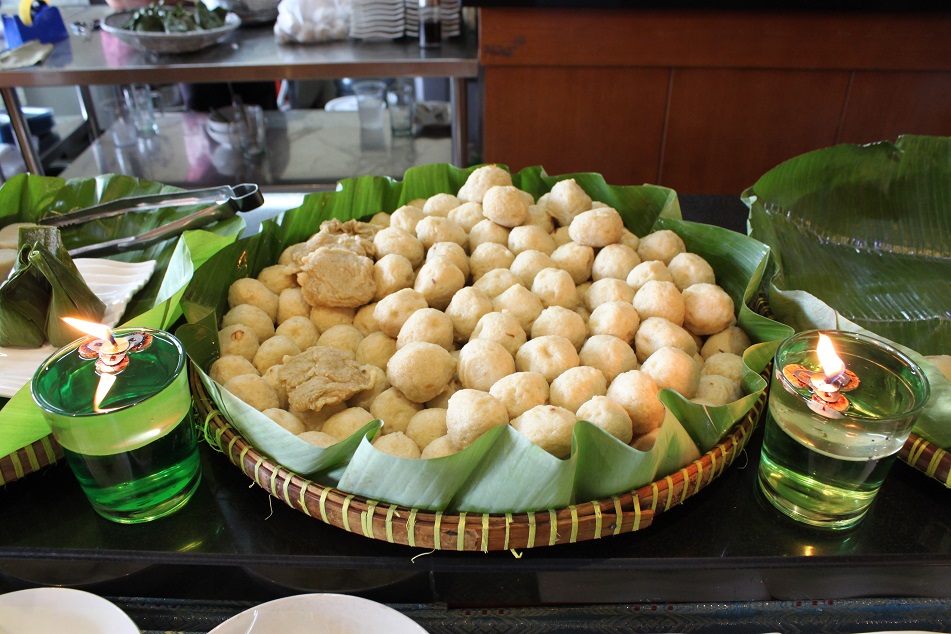
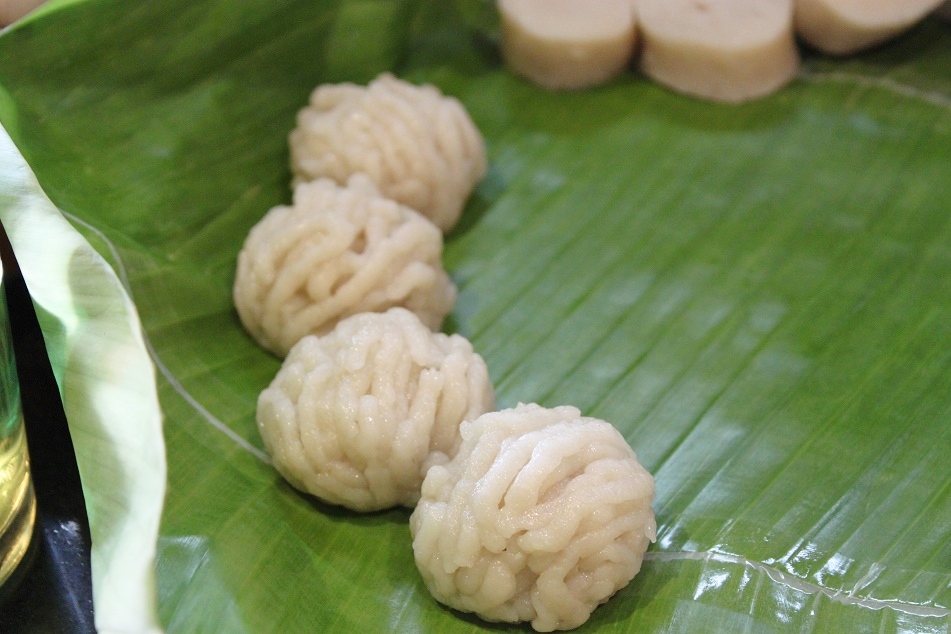
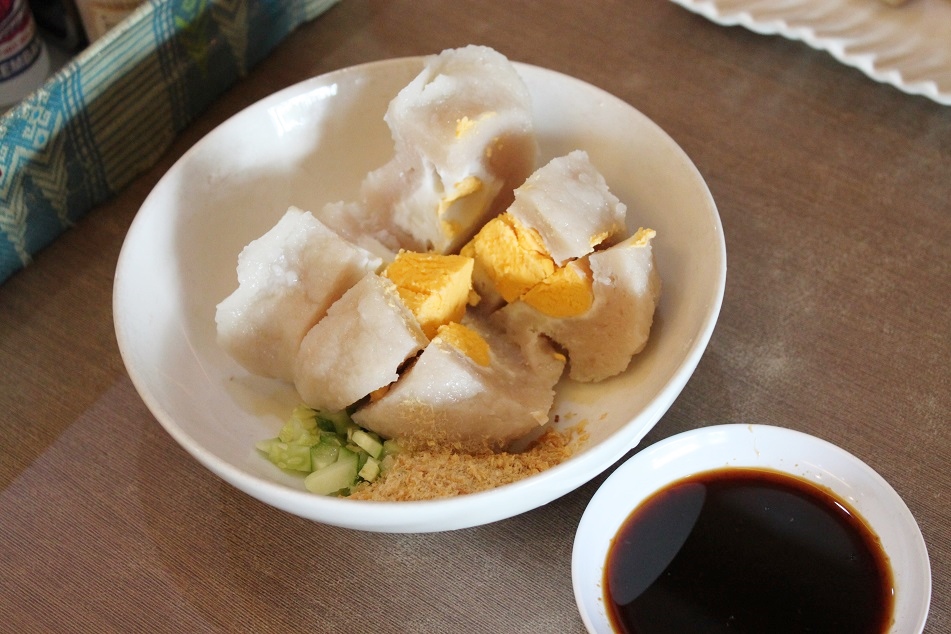
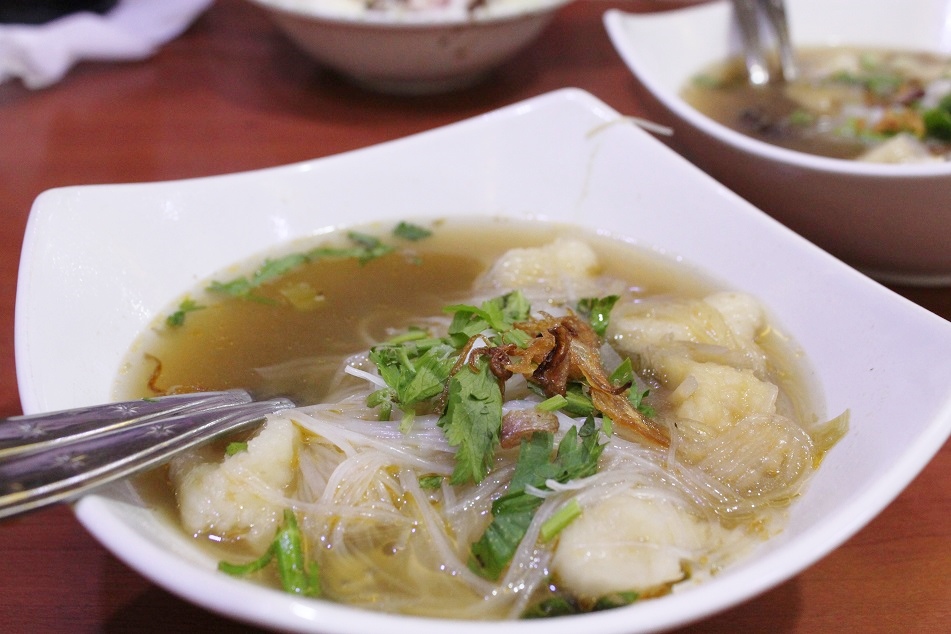
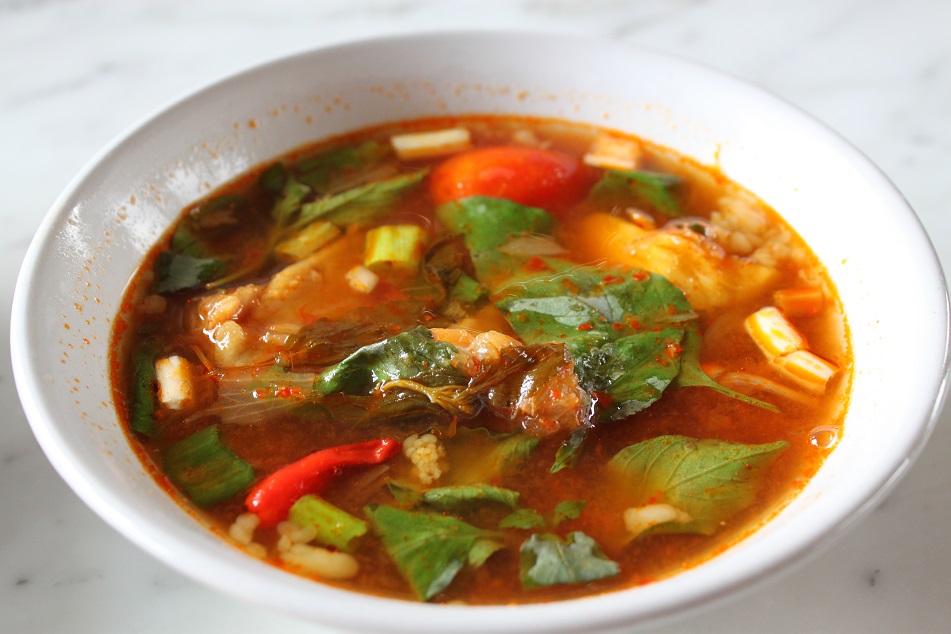
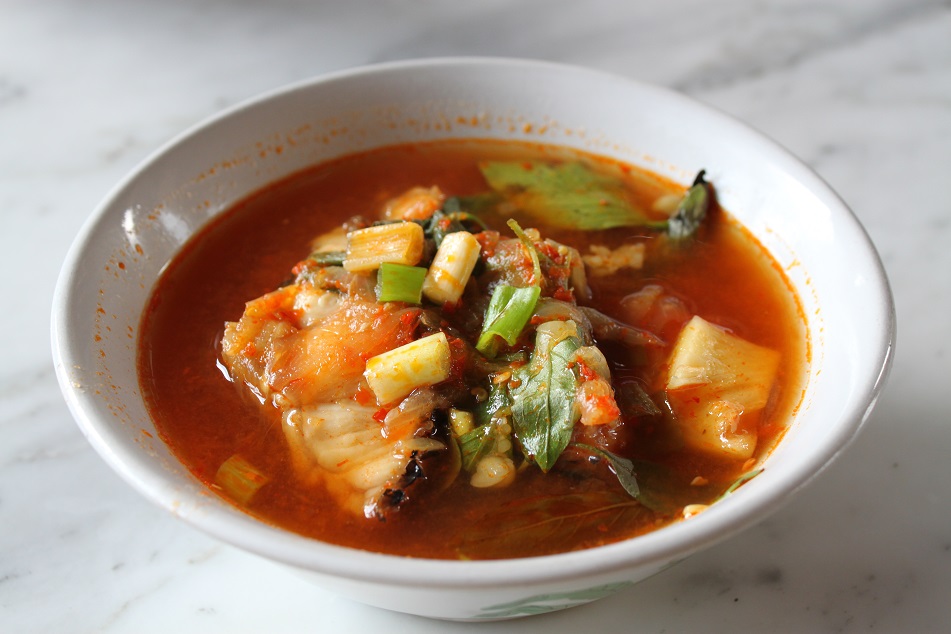
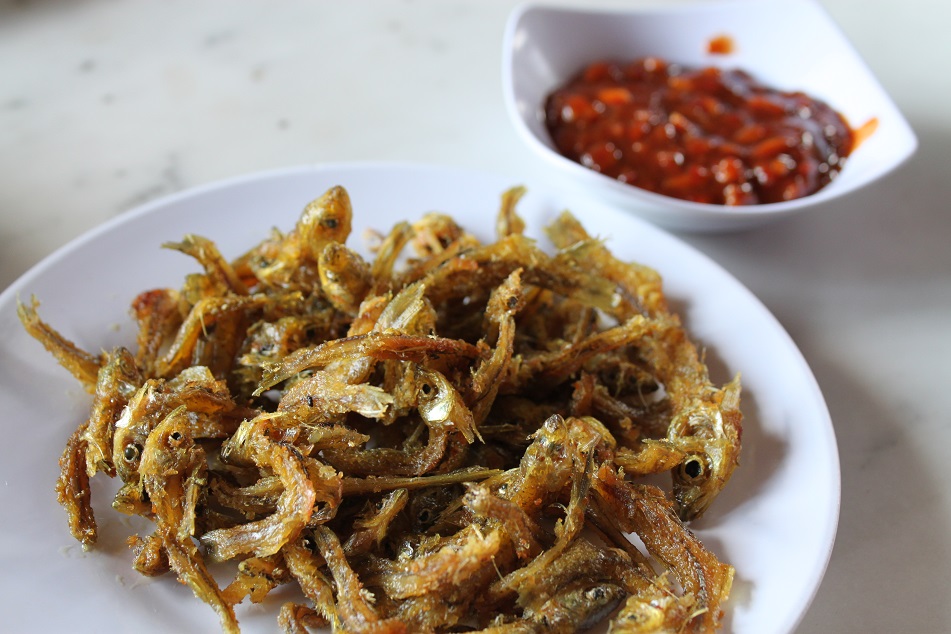
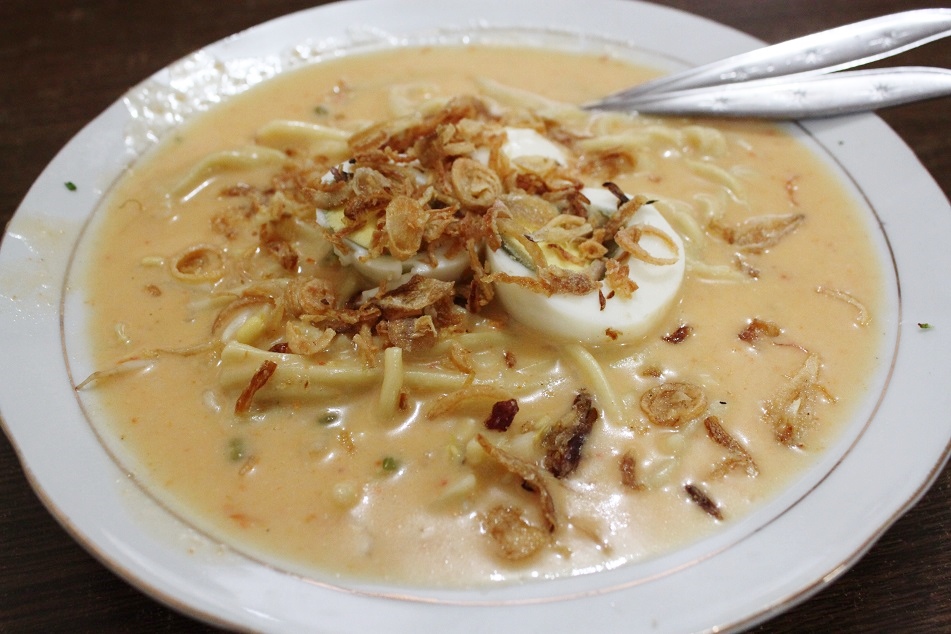
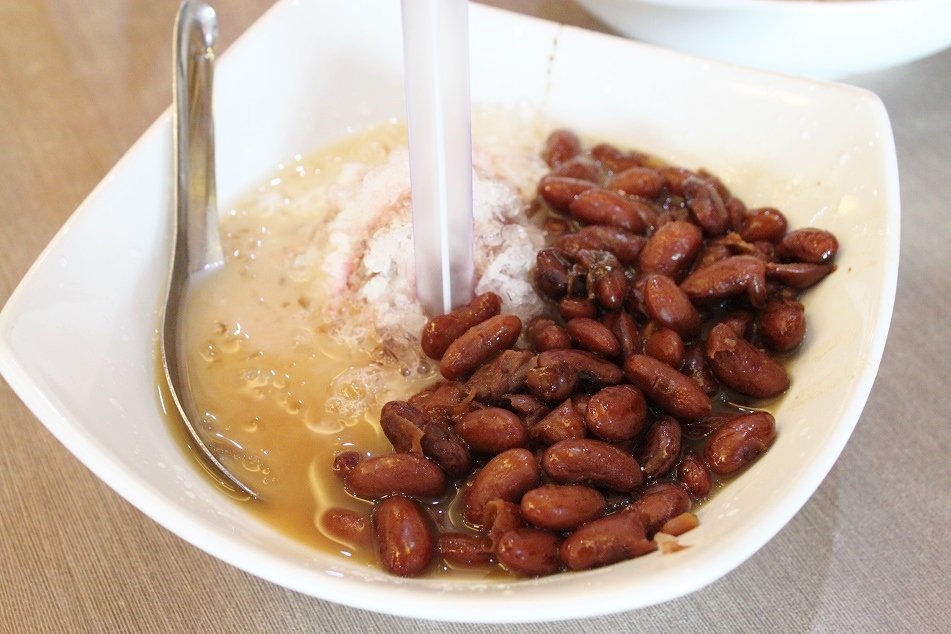
Everything looks good. 🙂
LikeLike
I’m really craving for pempek now. 🙂
LikeLiked by 1 person
How does it taste? 🙂
LikeLike
It’s chewy and you can clearly taste the fish. The cheaper ones generally taste more doughy though.
LikeLiked by 1 person
Thank you! Will surely try it if I’ll get to see one. Take care and will look forward for more of your photos! 🙂
LikeLike
Likewise, Aryan. Happy travels!
LikeLiked by 1 person
Where is “grilled” Pempek? Where is model? And so on…
LikeLike
Unfortunately I didn’t try pempek panggang when I went to Palembang earlier this year. I did try model though, but I didn’t take any photo of it. 🙂
LikeLike
Owh, next time just try it when you go back there.
LikeLike
I surely will.
LikeLike
I once read in Omnduut’s blog post that there are about 15 types of pempek :haha. Well, Palembang’s culinary itself is very rich, I think. The pindangs look like sayur asem to me (in which vegetables were substituted by fish, of course), and from its description, the taste is similar, kind of sour.
Can’t wait to visit the city and try all of these delicious food, I wish I could do it now. Are you in Palembang now, Bama?
LikeLike
Wow, 15! The locals do know how to be creative with their fish, don’t they? I actually prefer pindang to sayur asem, although I also enjoy the latter. You can say that I love so many dishes. 🙂
Actually right now I’m on the island of Samosir. This post is from my latest trip to Palembang a few months ago. Hope you can visit the city soon, Gara.
LikeLiked by 1 person
Ah, both of them are very delicious :hehe. Thank you! :)).
LikeLike
You’re welcome, Gara.
LikeLiked by 1 person
Pempek Keriting? Never seen it before. How does it taste? Similar like other pempek?
I thought that pempek has so many variants because of the form instead of the taste and filling -except the kapal selam one-.
Btw, you’re good in writing of culinary article Bam. Your descriptions and photos make me want to eat my monitor haha. Great post buddy!
LikeLike
To me it tasted very similar to adaan, but I prefer the latter for its smooth texture. Some pempek are quite different from the rest, and as Gara said there are actually 15 types of pempek out there!
Oh you’re too kind, Bart. But thanks! I guess this post came from both my heart and stomach. 🙂
LikeLike
Hi Bama – for me, an European, this cruisine is unknown whatsoever. I have no idea how any of these dishes might actually taste and I hate that, because the food looks beautiful in your pictures. Very welcoming to a gourmet’s investigation.
Happy travels,
– Ruta
LikeLike
The thing is Indonesian dishes are less known than those from Thailand, Malaysia, and Vietnam. Maybe because there are so many, too many, traditional dishes here it’s hard to introduce them to the world. But you can always come to Indonesia to sample pempek and beyond. 🙂
Have a great day, Ruta!
LikeLiked by 1 person
Bama, thanks. Likewise 🙂
– Ruta
LikeLike
Yayy. Banyak macam pempek dan Mie Celor Palembang yang menggoda. Beneran bikin ngiler, Bama. Dear perut sabar menunggu bulan depan yah 🙂
LikeLike
Hahahaha, buat yang suka ikan dan seafood Palembang memang surganya kuliner berbahan dasar keduanya. Nanti kalo aku udah dapet sinyal internet yang lebih stabil aku kasih rekomendasi tempat makan mie celor yang enak di sana. Tempatnya gak jauh dari PIM (Palembang Indah Mall).
LikeLiked by 1 person
i prefer to consume pempek without the cuko cause i already love the dough itself. and usually, the cuko is spicy – and i just can’t handle anything spicy ;p
interesting article on pempek, thx for sharing!
LikeLike
Actually pempek just by itself is already quite good. Those who can’t take too much of spiciness can do what do. Thanks for reading.
LikeLike
Reblogged this on venicetravelling.
LikeLike
The food looks awesome. I love discovering new cultures! I hope to visit Indonesia one day 🙂 Thanks for sharing.
LikeLike
Nasi goreng, mie goreng, rendang, and sate ayam are some of the most popular Indonesian dishes abroad. But the sheer diversity of the country is also reflected on its traditional cuisines. When you do come to Indonesia one day make sure you prepare your stomach for culinary adventure across the nation! 🙂
LikeLike
I have a friend back home that is Filipino/Indonesian. I will ask him about those dishes. Thanks for sharing!
LikeLike
My pleasure! Hope you’ll be able to try some, if not all, of the dishes I mentioned soon. 🙂
LikeLiked by 1 person
pempek mau hahhaha
LikeLike
Semua pasti mau pempek, kecuali mungkin yang gak suka ikan. 🙂
LikeLike
A wonderful culinary tour Bama. How are you doing?
LikeLike
Thanks Sue. I’m currently on an island called Samosir, in the middle of Lake Toba which is actually a crater of an ancient supervolcano. The weather is tricky though in this part of the world — it’s sunny one day but rainy the other day.
LikeLike
All looks so delicious
LikeLike
Your food photos always make one want to travel to Indonesia if for no other reason than to eat! All these look good, especially Pindang Gabus!
LikeLike
Wow, thanks Marilyn! Indonesian food is one of the most underrated Asian cuisines. But things are starting to change, I think. A few days ago I watched a video of some Westerners trying Indonesian dishes for the first time. All comments are positive. If you like your food a bit spicy, sour, and savory, then you’ll surely enjoy Pindang Gabus.
LikeLike
Any food from Indonesia is amazing to me, but your pics of Pempek look especially tasty! 😀
LikeLike
Hi Lee. I think there are direct flights from Singapore and KL to Palembang. So whenever you want to go it’s just a short flight away. 🙂
LikeLiked by 1 person
Hmmmm… looks deliciousssss….. so are you both in Palembang now?
Have a safe journey, Bama..
LikeLike
I wish I were in Palembang now, having lots of adaan. 🙂 But currently we’re in Samosir and we just tried Arsik for lunch. Such an interesting dish with all those spices! Thank you, have a great day! 🙂
LikeLiked by 1 person
Pempek is very similar to Philippines’ version of Fish Balls
LikeLike
Thanks to the Chinese people now we have so many dishes we’re so familiar with at home and beyond, including pempek and fish balls.
LikeLike
they look so mouth -watering! Always adore your photos & writing style =)
LikeLike
Thank you so much for your kind comment, Sherly! It’s cold where I am now and I wish I could have some pempek with spicy cuko to warm me up. 🙂
LikeLike
Well, you can always have pop mie ( penghangat di saat emergency) hahaha.. Have fun in Samosir Bama.. Eagerly waiting for your next post ! 😉
LikeLike
Ah of course. Nothing beats instant noodles for comfort food. 🙂 Thanks Sherly.
LikeLike
That bowl of mie celor looks really good to me. Is pempek widely available in all cities of Indonesia? I can’t wait to have a taste of it.
LikeLike
Mie celor really is comfort food. Its thick sauce and rich shrimp flavor are perfect for any time of the day.
Pempek is quite easy to find all across Indonesia, although most of them taste mediocre. The ones from Palembang are still the best.
LikeLiked by 1 person
Awesome!
Saya jadi ngiler sekali, hahaha..
LikeLike
Obatin ngilernya pake kunjungan ke Palembang. Atau malah jadi bikin tambah ngiler ya? 😀
LikeLike
Sepertinya saya boleh set jadwal untuk jalan bareng dengan kak Bama dan James yah *ngarep*
LikeLike
Hahaha… kalo kebetulan liat kami, teriak ya! 🙂 Kami lagi di Medan sekarang, besok ke Sumatra Barat.
LikeLike
Oke sip.Well noted! Haha.. Safe flight!
LikeLike
Your photos made me hungry. I hope to try some now that you explained evertbing so well. Thanks.
LikeLike
It might be difficult, if not impossible, to find pempek in where you live now because despite the fact that it is relatively widely available throughout Indonesia it’s less known abroad, unlike rendang or sate. You might need to come to Indonesia. 🙂
LikeLike
You are right. They only have satay where I live. I guess I need to put Indonesia in my places to travel.
LikeLike
I guess you really should. 🙂
LikeLike
Reblogged this on alizamehayu.
LikeLike
These look so good! You dont see many food like these were I’m from, lol just simple salads or a meal 😍
LikeLike
At least salad is healthy. 🙂 Trying local dishes is arguably one of the best travel experiences you’ll get wherever you go.
LikeLiked by 1 person
it’s look so delicious, please come to Yogyakarta too, and you will find another delicious traditional foods 🙂
LikeLike
Ah, Jogja, one of my favorite cities in Java. I have been there several times now, and my latest visit was just over a month ago. As for the food, there’s always place in my heart (and palate) for gudeg and bakpia. 🙂
LikeLike
great sir 🙂 please taste ‘rujak ice cream pakualaman’ too if you visit jogja next time.
LikeLike
Ah very well noted. Thank you! 🙂
LikeLike
Oh mine, I’d love to go to Indonesia… and the food looks greaaaaat 😀
LikeLike
The food itself is enough reason to book that flight to go to Indonesia. 🙂 While many people around the world are now quite familiar with Japanese, Korean, Chinese, Indian, Thai, Vietnamese and Singaporean dishes, it’s still relatively hard to find Indonesian restaurants outside the country.
LikeLiked by 1 person
aduh, bikin lapar ini postingan
LikeLike
Aduh, maaf.. 😀 Saya juga tiap liat fotonya jadi kangen pedesnya cuko.
LikeLike
This looks fantastic Bama, and I am now committing myself to take a trip to Indonesia just to try the pempek and some of the other great dishes you have photographed and discussed…nothing quite like being in the perfect environment as well to enjoy such food. Cheers to a great summer!
LikeLike
As tasty as Indonesian nasi goreng might be, there are so many traditional dishes from the country which are barely known abroad. Even I am constantly surprised by the diversity of Indonesian cuisines. This morning I tried a new dish from Ternate, one of the fabled Spice Islands, made from tuna, nutmeg, cloves, and other spices and it was superb! Please do come to Indonesia, Randall! Even if it’s just for the food. 😀
LikeLike
That is what I always find a bit fascinating, often I find the dishes I had never heard about being incredible. Nasi Goreng is the one Indonesian dish I know (delicious), but know if I spent time in Indonesia I’d have many different favorites… and the dish you describe above sounds incredible (when there is a historical context added with a dish, such as ingredients from the fabled Spice Islands…then it makes a delicious dish even more magical). 🙂 Happy trails and happy sails ~
LikeLike
Speaking of the Spice Islands, I’m in Ternate now in the northern part of the Moluccas, the island where cloves are originally from. It was once controlled by the Portuguese, then the Spanish, and eventually the Dutch who controlled it until Indonesia’s independence in 1945. On the island I saw a lot of clove and nutmeg trees, but interestingly the locals don’t use many spices in their dishes. It is in places like Sumatra (for example Aceh), once an important trading port along the Spice Route, where spices are widely used in local cuisines. Happy travels to you too, Randall!
LikeLike
This is so cool ~ you are on an adventure of my dreams with the Spice Islands. Interesting that the locals do not use many spices in their dishes. Cheers and continued happy travels.
LikeLike
Hopefully you’ll visit the Spice Islands sooner than later!
LikeLike
The best part is the Cuko. 😀
LikeLike
Yes, setuju banget! For those who love spicy food cuko really is key to deciding whether a pempek is good or not.
LikeLike
yummmmmmmmm!!! I love your pictures! Just started my blog today and want to get connect to more travelers out here.
LikeLike
Thank you! Welcome to the blogging world and please do share your stories to the world! 🙂
LikeLike
Hi Bama, I’ve always been very interested in Asian dishes and this article on Indonesian dishes is very interesting, can you share a little bit more about what’s in the Es Kacang Merah it looks like red beans right?
LikeLike
I’m glad this post piqued your curiosity on Indonesian dishes. Kacang merah means red bean in Indonesian, so as you have guessed it is indeed made of red beans, shaved ice, and syrup.
LikeLiked by 1 person
Yum! sounds delicious.
LikeLike
I’m a huge fan of Asian food! Check out the Top 10 Must Try Food in Singapore! https://shanicekitchen.wordpress.com/2015/09/16/sg50-jubilee-top-10-must-try-food-in-singapore/
LikeLike
Ah Singapore. I’ve tried some of the dishes there, but I will be coming back for more one day! 🙂
LikeLike
Hello there. A nice write up on the food with lots of details. These dishes looks really good especially with well captured photos! 🙂
LikeLike
Thank you for your kind words! I wish I could have that pempek right now. It is that addictive!
LikeLiked by 1 person
I am sure it is addictive, its looks delicious. I cant wait to try it out one day! 🙂 hehe
LikeLike
Please do try it, Cammal. 🙂
LikeLiked by 1 person
Your culinary posts keep getting better and better Bama! As does your food photography. Look forward to learning some tricks when we meet 🙂 Mie Celor sounds fantastic. Just the kind of ‘meal in a pot’ kind of dish I love.
LikeLike
Madhu! We have been staying in the Banda Islands for almost two weeks, but within a few days we’ll be flying out of Southeast Asia. We can’t wait to see you in Chennai! I’m sure we’ll exchange not only food photography techniques, but also lots of stories. 🙂 Actually ‘meal in a pot’ sounds like typical comfort food.
LikeLiked by 1 person
Without a doubt 🙂 Could you mail me your final dates once again please Bama?
LikeLike
Done. Please check your email. 🙂
LikeLike
The food is looks like great !
LikeLike
I would say the food in Palembang is one of my favorite in Indonesia.
LikeLike